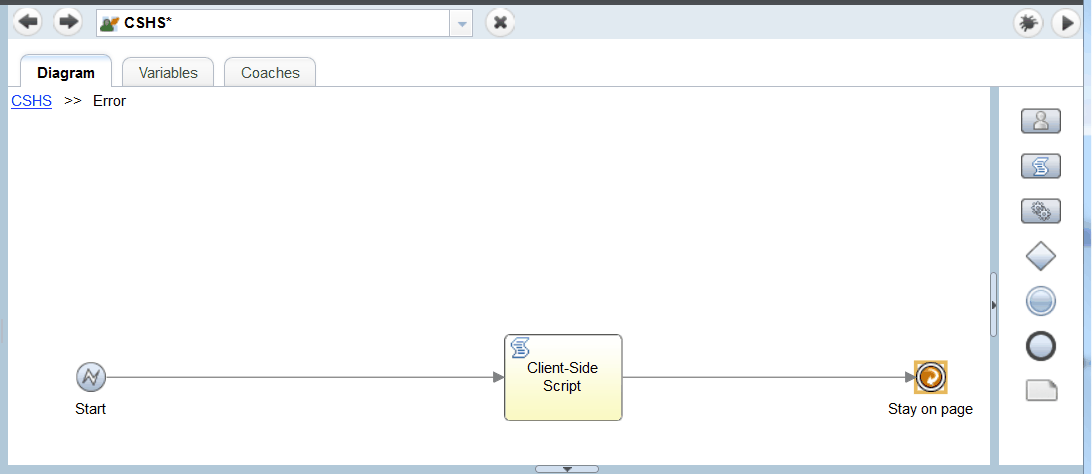Use error event handlers to catch errors at any point in
a client-side human service and to implement error handling logic
for these errors. To catch a specific error, you can set the properties
of the error in the Implementation tab of the
error event handler by specifying the error code and mapping the error
data to a specified variable.
Procedure
To add an error event handler to the client-side human
service, complete the following steps:
- Open the Process Designer desktop editor.
- Open the client-side human service that you want to work
with.
- In the Diagram view, drag an event
handler
 onto the canvas. By default,
an event trigger of error event is assigned and the handler changes
to an Error event handler.
onto the canvas. By default,
an event trigger of error event is assigned and the handler changes
to an Error event handler. 
- By default, the error event is set to catch all errors.
To catch a specific error, complete the following steps:
- In the Implementation tab, under Behavior,
select Catch specific errors.
- Click Error code picker to select
a local variable that specifies the error code for the error to be
caught.
- Click the Error mapping picker
to map the error data to an error mapping variable that was previously
defined on the Variables tab.
- Double-click the error event handler, and then implement
your error handling logic.
- You can declare additional private variables in the error
event handler that are visible only to the event handler.
- You can use a coach to display the error to the user.
Important: If you use a coach in the error event handler, you
must provide a path that exits the flow with either an end event or
an error end event. If you use a stay-on-page event after a coach
in an error event handler, you will be returned to the coach you just
exited. If there is no other path out of the coach, an infinite loop
occurs.
- Optional: To define multiple error event handlers
that can have different error handling logic for different errors,
iterate through steps 3 - 5. For each error event handler, use different
error codes or error data to differentiate between the different kinds
of errors.
- Click Save all to save the configuration
of the client-side human service.
 onto the canvas.
onto the canvas.
